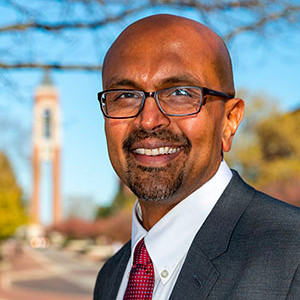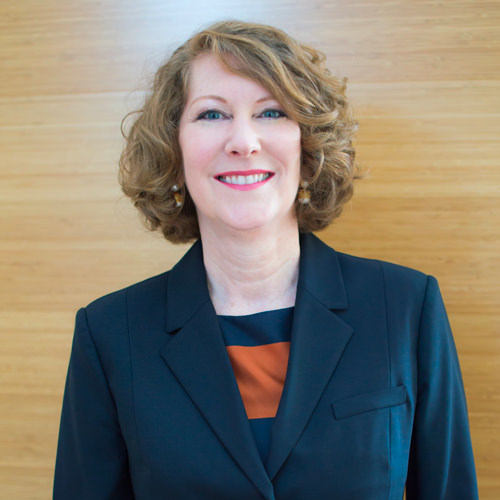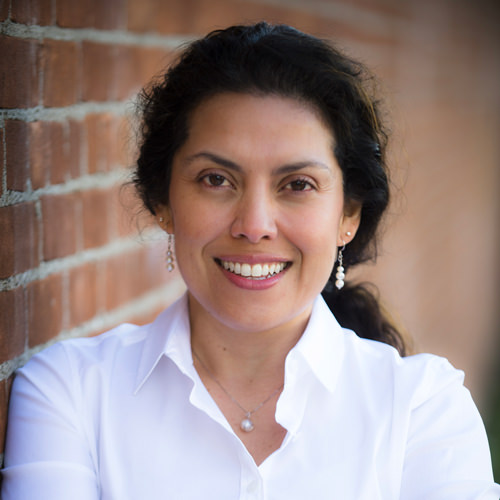
By
Anand R. Marri, Dean and Professor, Teachers College, Ball State University
Paaige K. Turner, Dean and Professor, College of Communication, Information, and Media, Ball State University
Susana Rivera-Mills, Provost and Executive Vice President for Academic Affairs, Ball State University
While the COVID-19 pandemic has presented numerous challenges for higher education institutions across the world, it also offers an opportunity to reflect upon how this moment can prepare academic leaders for a changing landscape. The lessons we learned at Ball State University are organized into three areas, those that can take higher education forward into the future, those that are applicable for that moment, and those that did not achieve the intended objectives.
Ball State University serves over 22,000 undergraduate and graduate students both on campus and through our numerous online programs. Currently, over one-third of our undergraduate students receive Pell Grants and over 25 percent of our undergraduate students are first-generation college students.
The COVID-19 pandemic presented a new set of challenges and exacerbated existing challenges across higher education while providing an opportunity to affirm commitments to institutional values. Beneficence is Ball State’s iconic statue that represents the beneficence and tenacity of the Ball Family and our community. Ball State approached these challenges guided by the values of Beneficence; specifically, courage, a commitment to challenge each other to excel, and gratitude. These values compelled us to review every course, every section, every instructor, every student, and every space to ensure we are fulfilling Ball State’s top priority – student success. For example, in March 2020, the Provost called for an inventory that ranked all current classes, sections and instructors by degree of flexibility for an online learning environment and documented necessary support. In the summer of 2020, Facilities and Information Technology conducted a space audit of both academic and non-academic space for capacity and technology. In late summer and fall of 2020, Academic Advising and the Office of Institutional Research reviewed every student schedule to assess the impact of any changes to course modality and developed a personalized outreach plan. This commitment ensured that we continued to engage students in educational, research, and creative endeavors through our signature immersive learning projects. In these high-impact learning experiences, collaborative student-driven teams earn credit for working with community partners such as businesses, nonprofits, and government agencies to address community challenges through the creation of impactful products. These challenges are a micro-cosmos of what the future of higher education could look like and provided the opportunity to test and assess potential responses to deliver student success.
The Changing Landscape of Higher Education
While the pandemic generated highly visible upheavals in the landscape of higher education, the reality is that the underlying bedrock of U.S. culture has been shifting for decades. The demographics of the United States and higher education are shifting. According to the , the U.S. is more multiracial and racially and ethnically diverse than in past years. States in the South and West have experienced the largest population gains in the past century while Northeastern and Midwest state populations are declining. The U.S. middle class is shrinking with the percentage of adults living in middle-income households decreasing from 61p percent in 1971 to 51 percent in 2019. reports that the wealth gap between middle- and lower-income families and upper-income families is growing. In higher education the student demographic and experience are also shifting. reports data indicating:
- The average age of a college/university student hovers around 27 (though that is decreasing as the economy heats up). [Traditional college age is defined as 25 and under.]
- 38 percent of students who enrolled in 2011 transferred credits between different institutions at least once within six years.
- 38 percent of students are enrolled part-time.
- 64 percent of students are working either full-time or part-time.
- 28 percent of students have children of their own or care for dependent family members.
- 32 percent of students are from low-income families.
- The secondary education experience has an increasingly high variation, resulting in students whose preparation for college-level work varies greatly.
Along with these demographic changes, the needs for mental and academic support have also evolved. According to a survey conducted by the Association for University and College Counseling Center Directors prior to COVID-19, there was already a steady increase in the use and demand for counseling on college campuses. Yet, universities face increasing barriers to providing necessary services. These barriers include addressing stigma, shifting class schedules and modalities, limited financial resources, and reduced staffing for mental health providers. The increase in first-generation, non-traditional, working, and parenting students requires academic support to be more flexible in schedule and modality. First-generation and their families need support to understand concepts such as credit hours, office hours, and financial aid.
Overlaying all these shifts is a declining public perception of the value of higher education. As the cost of education and debt per student rises, families and students are frequently asking, “Is it worth it?” A question that will be increasingly difficult to answer in the affirmative if institutions do not respond to the changing landscape of higher education. Just as we ask students to reflect upon their learning experiences, so must higher education.
Lessons That Move Us Forward into the New Landscape
Offer Hybrid Models of Instruction
We offer hybrid models of simultaneous face-to-face and distance learning to accommodate more students by providing faculty and students the necessary equipment and skills. These hybrid models enable faculty to meet instructional goals while accommodating the needs of students. This necessitates recognizing that hybrid courses require more effort from faculty and more financial and technological resources from our institution and that benefits for students outweigh the costs involved. To do this well, we suggest that institutions proactively invest in necessary faculty support for course design, active and inclusive pedagogies, and require use of a learning management system and other technology solutions. At Ball State, this took the form of free micro-boot camps during the summer with extensive support provided to faculty, a faculty learning community to support and assess synchronous online instruction, toolkits, and one-on-one consultations. We cannot emphasize enough the importance of providing faculty with high-touch instructional support to facilitate these hybrid classes. With the appropriate support, the quality of our courses remains high regardless of modality. Ensure Access to Technology
Students must receive access to technology that is both affordable and flexible to allow access to hybrid models of instruction. Through joint efforts across the campus community, we make laptops, Wi-Fi access, and other necessary technology available at no or low-cost for students to checkout or purchase. We set up Wi-Fi hotspots in parking lots and turned unused classrooms into student space to allow students a location to join online instruction. Our partnerships across the city and state with libraries, non-profits, and industry allowed Wi-Fi networks to open to the public as well, thereby increasing accessibility for all community members. Providing low or no-cost borrowable equipment was the key element to ensure equitable access for faculty, staff, and students. Since we did not readily possess this equipment, we applied for grants and gifts from community and regional agencies to purchase the technology needed. Expand Resources for Student, Faculty, and Staff Wellbeing
The pandemic has led to many difficulties in maintaining mental and physical wellbeing for students, faculty, and staff. Ball State community members now face additional challenges such as increased childcare and eldercare duties, unemployment/underemployment, social isolation, and disrupted eating, drinking, and sleeping habits. To support wellbeing, we promoted a focus on maintaining healthy lifestyle across our institution. For example, we offered resources and incentives to participate in classes and workshops on mindfulness, meditation, exercise, social media usage, and news consumption. We offered workshops at multiple times and in synchronous and asynchronous formats. Since such offerings are impactful to individuals, especially those from low- and moderate-income families who lack access to resources outside the university, we relied on the expertise from Human Resources and College of Health to play a critical role in offering these kinds of workshops and trainings to support all community members. In addition, we reviewed policies to ensure they included the pandemic as a criterion for flexibility whenever possible. These included policies regarding leaves of absence, promotion and tenure, grant extensions, and remote work.
Lessons from Adjustments Only Applicable During Pandemic
Strategic Use of Virtual Education
As a global leader in providing high-quality online courses and programs, Ball State recognizes the value of virtual classes to our students, faculty, and staff. We quickly moved to all remote classes during the initial months of the pandemic and used our vast expertise and experience to ensure student success. This shift, however, revealed that an all-virtual instruction format could be an obstacle to our students who thrive in in-person classes and learning experiences. Further, traditional age students who were transitioning from high school missed the community building activities that are part of an on-campus experience. Students felt in limbo–neither a high school nor a college student. Many of these students faced challenges in a virtual environment, ranging from a lack of technological and economic resources, new family responsibilities, and social isolation. Regardless of modality, a “one-size-fits-all” approach to learning will not work for today’s students. Consequently, we recognize the limits of all virtual classes for all our students. As such, we triaged courses that required on-campus locations and those that could be successful on-line or in a remote location. For example, faculty emphasized individual video feedback to improve student performance in our music courses. Faculty also set up virtual ensemble practices for students. Our journalism faculty set up remote studios and newsrooms to afford students the opportunity to actively engage with each other and their instructors as they engaged in their profession.
Virtual field-based placements enabled our students to gain valuable and necessary experiences in their programs of study during the pandemic. However, participating students and faculty provided feedback that such experiences did not achieve the desired immersive learning experiences. Several students felt that virtual experiences served as an obstacle to forming meaningful relationships during the placements. Organizations that hosted students, such as schools, clinics, labs, and hospitals, agreed that such placements might have limited the impact of these experiences. To address this shortcoming, we began subscribing to video assessment software that helps learners demonstrate skills online. The software enables our students to create collaborative video assignments and our faculty and clinical supervisors to give personalized feedback. As such, institutions of higher education should intentionally examine how to adjust virtual field-based experiences to better replicate face-to-face experiences.
Personal Connection Is a Necessary Component Regardless of Work Modality
Many of our administrators, faculty, and staff smoothly adjusted to all virtual meetings during the pandemic. They put forth a great deal of effort to successfully meet their scholarship, teaching, and service responsibilities through all virtual meetings. The faculty and staff also worked hard to ensure student success, through the virtual format. While this format helped Ball State meet our professional goals during the pandemic, many administrators, faculty, and staff greatly missed the informal interactions afforded during in-person interactions and meetings. Virtual meetings prevented meaningful socialization among students, faculty, and staff. A fully remote work environment challenges the ability to be inclusive about decisions that are made more informally, erodes a culture of collaboration, and affects the sense of community. To address the challenges of all virtual meetings, faculty and administrators set up more individual and small group meetings. Faculty also arranged virtual happy hours to provide opportunities to socialize in non-work settings. Some of our colleagues also limited their daily number of meetings to minimize burnout and to afford the time to engage meaningfully in meetings.
Missed Objective, But Lesson Learned
Synchronous Online Courses/Experiences Require Extensive Preparation
Many students, faculty, and staff looked forward to implementing synchronous online courses/experiences during the pandemic. Once implemented, however, students and faculty realized that such instruction requires extensive planning and numerous resources to promote student success. For example, students could not meet at the appointed time without additional childcare/eldercare resources due to familial and financial constraints particularly given the fluidity surrounding care needs and the marketplace’s ability to meet those needs. Similar constraints applied to some faculty as well, leading to adjustments of course requirements and schedules as they too faced shifting care needs. For example, many faculty provided flexible due dates for assignments to allow for students to catch up and met with students beyond “regular” office hours for those students who fell into the vulnerable populations categories. Several faculty, however, felt it was hard to afford these allowances to some and not to others. These faculty struggled to create a “uniform” grading process across their course and crafted equity-based assignments and curricular goals. Overall, Ball State faculty gained a deeper appreciation for the challenges the current demographic of students face and are better able to adapt going forward prompting fluidity in the design of course assignments without compromising learning outcomes. Expand, Not Duplicate, Assessment and Learning Options in Virtual Environments
At Ball State, virtual assessments posed challenges for our students, faculty, and staff for a variety of reasons. For example, some students and faculty lacked stable broadband internet connections, especially during testing periods. Further, other students and faculty ran into childcare/eldercare and other obstacles throughout the exam times. Finally, some students simply did not have access to a quiet environment during the exams. Others faced a combination of these obstacles. Given these factors, our faculty emphasized flexibility during virtual assessments working to identify alternative testing and assessment procedures and locations. For example, it became difficult to view details in large graphics on small screens during student presentations or exams. Many faculty provided detailed feedback after the presentations based on a closer examination of graphics and images. Several faculty reported that they presented more detailed written feedback than usual because they could not comment directly on the image or graphics themselves. This required increased effort on part of the faculty and support from our Division of Online and Strategic Learning.
Some courses, which rely heavily on hands-on use and training on equipment, did not work well in virtual formats. Most students, due to factors beyond their control, had difficulty achieving the desired learning experiences in these hands-on courses and needed extra support as they struggled to imagine the engagement with equipment. For disciplines where students need to acquire a kinesthetic, muscle-memory, the virtual environment failed to provide one aspect of the desired learning experiences and had to be adjusted. Most of these courses require further reconceptualization in a virtual environment to fully reach targeted learning experiences, yet faculty now understand the constraints and are adapting, creating “technology boxes” that can ship video, lab, or other equipment to students or using online simulations. These boxes provide students with all the necessary hardware and software to engage in a course or project. Many Ball State students, since over 80 percent of our students live in the state, picked the boxes on campus in a contactless manner. We, using grant funding and other philanthropic resources, delivered the boxes to other students who needed them. In addition, we set up socially distanced labs and workstations for those classes that required a physical presence on campus. These spaces required us to think creatively to better adjust to the needs of our students. For example, we expanded class times to later at night and on the weekends.
Conclusion
Ball State University students, faculty, and staff overcame a variety of obstacles to promote student success through collaboration and partnerships both on- and off campus. While the pandemic and the need to respond rapidly with little notice stressed the resources of all involved, the experience demonstrated that institutions of higher education CAN adjust to meet the needs of the changing landscape. Ball State learned that higher education providers, like us, can offer multi-modal, hyflex learning environments that recognize the diversity of learners and their life circumstances. Through collaborations between instructional technology, online learning services, and academics; higher education can recognize and respond to the changes in higher education, and we at Ball State know that we will never be the same again…. and we accept that with courage and gratitude.
 Anand R. Marri, Ph.D., serves as Professor and Dean of Ball State University’s Teachers College. His academic research focuses on economic literacy, civic and multicultural education, teacher education, and urban education. He published in many leading education journals and quoted in major publications such as the New York Times, Wall Street Journal, and CNN. He previously held senior faculty and leadership positions at Teachers College, Columbia University, the University of Rochester, and the Federal Reserve Bank of New York.
Anand R. Marri, Ph.D., serves as Professor and Dean of Ball State University’s Teachers College. His academic research focuses on economic literacy, civic and multicultural education, teacher education, and urban education. He published in many leading education journals and quoted in major publications such as the New York Times, Wall Street Journal, and CNN. He previously held senior faculty and leadership positions at Teachers College, Columbia University, the University of Rochester, and the Federal Reserve Bank of New York.
 Paaige Turner, Ph.D., serves as Dean and Professor in the College of Communication, Information and Media at Ball State University. She is an experienced higher education administrator, communication teacher/scholar, and organizational consultant with an extensive background in gender in the workplace, strategic planning, mentoring, change management, budgeting, education technology and international education.
Paaige Turner, Ph.D., serves as Dean and Professor in the College of Communication, Information and Media at Ball State University. She is an experienced higher education administrator, communication teacher/scholar, and organizational consultant with an extensive background in gender in the workplace, strategic planning, mentoring, change management, budgeting, education technology and international education.
 Susana Rivera-Mills, Ph.D., serves as Provost and Executive Vice President for Academic Affairs at Ball State University. As provost, she oversees all aspects of Ball State’s academic mission, including supporting leadership for all academic units. Dr. Rivera-Mills’ goal is to create a learning environment where all students can access a high-quality education and succeed in order to reach their full potential. Her research focuses on Latino communities, Spanish language and culture, issues in sociolinguistics, as well as online teaching and learning.
Susana Rivera-Mills, Ph.D., serves as Provost and Executive Vice President for Academic Affairs at Ball State University. As provost, she oversees all aspects of Ball State’s academic mission, including supporting leadership for all academic units. Dr. Rivera-Mills’ goal is to create a learning environment where all students can access a high-quality education and succeed in order to reach their full potential. Her research focuses on Latino communities, Spanish language and culture, issues in sociolinguistics, as well as online teaching and learning.

